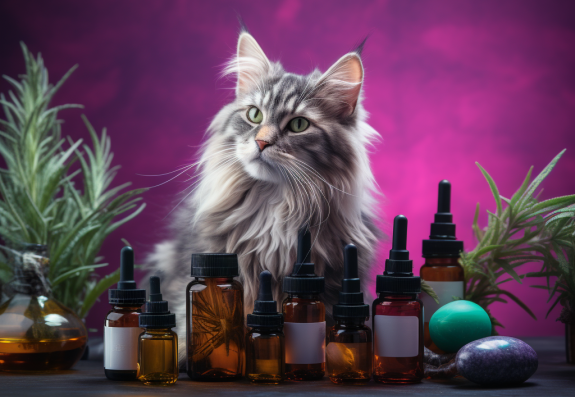Seasonal Home Changes for Pets
Seasonal changes can have a significant impact on our pets’ well-being. From preparing our homes for winter to keeping our pets safe during summer, there are important steps we can take to ensure their comfort and health. In this article, we will explore the key considerations for each season and provide helpful tips to make the seasonal transitions easier for our furry friends.
Key Takeaways
- Create a cozy space for your pet during winter to keep them warm and comfortable.
- Protect your pet from cold weather by providing appropriate clothing and limiting outdoor exposure.
- Winterize your pet’s outdoor area by ensuring proper insulation and providing shelter.
- Provide shade and ample water for your pet during the hot summer months.
- Take precautions to protect your pet from heatstroke and keep their paws safe on hot surfaces.
Preparing Your Home for Winter

Creating a Cozy Space for Your Pet
When preparing your home for winter, it’s important to create a cozy space for your pet. Automatic Cat Litter Box is a great addition to your pet’s cozy corner. It provides a clean and convenient solution for your cat’s bathroom needs. Additionally, consider adding soft blankets or a comfortable pet bed for them to snuggle up in. Creating a warm and inviting space will help your pet feel safe and comfortable during the cold winter months.
Protecting Your Pet from Cold Weather
For pets battling dropping temperatures, shelter and blankets are keep warm. There can be a great safe haven. Look for options with adjustable temperature controls and safety certifications to keep your pet comfortable and safe. Paw protectors or pet boots will protect your pet from these situation and prevent cracks or infection. Pet-safe moisturizers can prevent dryness and cracking. Prioritize your pet’s needs for a fun winter. It’s about making sure they have everything that need, including warmth healthy and happy. By investing in these winter essential pet products. Not only does it provide comfort for pets, but it also guarantees safety during the cold season. Remember that a little preparation can help your pet have an enjoyable winter experience.
Winterizing Your Pet’s Outdoor Area
When winter arrives, it’s important to take steps to ensure your pet’s safety and comfort in their outdoor area. Here are some tips to help you winterize your pet’s outdoor space:
-
Shelter and Blankets: Provide your pet with a cozy and safe haven by providing them with shelter and blankets. Look for options that have adjustable temperature controls and safety certifications to keep your pet comfortable and secure.
-
Paw Covers: Snow and ice can be harmful to your pet’s paws. Consider using paw protectors or pet boots to prevent cracks or infections. This is especially important for cats and dogs.
-
Dry Skin: Just like human skin, your pet’s skin can dry out in the winter. Prevent dryness and cracking by using pet-safe moisturizers.
Remember, preparing your pet’s outdoor area for winter is more than just keeping them warm. It’s about ensuring their overall well-being and happiness. By investing in these winter essentials, you can provide your pet with a comfortable and safe outdoor experience during the cold season.
Keeping Your Pet Safe During Summer

Providing Shade and Water for Your Pet
During the summer months, it’s important to provide shade and water for your pet to keep them cool and hydrated. Here are some tips to help you create a comfortable environment for your furry friend:
- Shade: Make sure your pet has access to a shaded area, whether it’s under a tree or a covered patio. This will help protect them from the hot sun and prevent overheating.
- Water: Always have fresh, clean water available for your pet. Consider using a water fountain or automatic water dispenser to ensure they stay hydrated throughout the day.
- Cooling mats: Invest in a cooling mat for your pet to lie on. These mats are designed to lower body temperature and provide relief from the heat.
Remember, providing shade and water is essential for your pet’s well-being during the summer. By following these tips, you can help them stay comfortable and safe.
Protecting Your Pet from Heatstroke
Especially when you are away from your home with pets. Remember that a little preparation can help your pet have an enjoyable winter experience. How to cool down a dog on a hot day December 22, 2023 Read More » How can CBD help dogs with fear of loud noises ? December 20, 2023 Read More » Health conditions that are most common in older dogs December 18, 2023 Read More » How to stay healthy with your dog December 15, 2023 Read More » What to choose between dry shampoo & liquid shampoo for dog ? December 13, 2023 Read More » Knowledge about training your puppy at home December 8, 2023 Read More » Previous PostKnowledge
Keeping Your Pet’s Paws Safe on Hot Surfaces
During the summer months, hot surfaces can pose a danger to your pet’s paws. Paw protectors or pet boots are essential for protecting your pet from burns and blisters. These protective coverings create a barrier between your pet’s paws and the scorching pavement or sand. They can also prevent your pet from stepping on sharp objects or chemicals that may be present on the ground. It’s important to choose paw protectors that fit properly and are comfortable for your pet to wear. Regularly check your pet’s paws for any signs of irritation or injury, and consult your veterinarian if you notice any issues.
To ensure your pet’s safety on hot surfaces, follow these tips:
- Avoid walking your pet during the hottest parts of the day when the ground is at its hottest.
- Opt for shaded areas or grassy surfaces instead of pavement or concrete.
- Test the temperature of the surface with your hand before allowing your pet to walk on it.
- Keep your pet’s paws moisturized to prevent dryness and cracking. Use a pet-safe moisturizer recommended by your veterinarian.
Remember, your pet relies on you to keep their paws safe and comfortable during the summer months. By taking these precautions, you can enjoy outdoor activities with your pet while minimizing the risk of paw injuries.
Spring Cleaning for Your Pet’s Health

Cleaning Your Pet’s Bedding and Toys
When cleaning your pet’s bedding and toys, it’s important to prioritize their safety and well-being. Whisker Wellbeing is a crucial aspect to consider, as cats rely on their whiskers for balance and navigation. To ensure their comfort, use gentle detergents that are free from harsh chemicals and fragrances. Additionally, regularly inspect toys for any signs of wear and tear, such as loose parts or frayed edges, as these can pose a choking hazard. If you notice any damage, it’s best to replace the toy with a safe alternative. Remember to involve everyone in the household, including children, in the habit of picking up toys and putting them away after playtime. By maintaining a clean and clutter-free environment, you can create a safe space for your pet to relax and play.
Removing Allergens from Your Home
During the spring season, it’s important to take steps to remove allergens from your home to ensure a healthy environment for your pet. Allergens such as pollen, dust mites, and mold can trigger allergies and respiratory issues in pets, just like in humans. Here are some tips to help you reduce allergens in your home:
- Regularly vacuum and dust your home to remove pollen and dust particles that may have settled on surfaces.
- Wash your pet’s bedding frequently to remove allergens that may have accumulated.
- Keep windows closed to prevent pollen from entering your home.
- Use air purifiers with HEPA filters to capture allergens in the air.
By following these steps, you can create a clean and allergen-free environment for your pet, allowing them to enjoy the spring season without discomfort or health issues.
Grooming Your Pet for the New Season
Maintaining your pet’s coat is important during the winter. Good quality brushes, shampoos and conditioners are essential for pet’s fur care. They can prevent split ends, drying, and shedding. Additionally, having an emergency kit with first aid equipment and things to keep warm can save lives. If an unexpected emergency occurs, prepare a hat and scarf to protect your dog or cat from the winter weather outside. This will protect your pet’s ears and neck when the temperature decreases. Prioritize your pet’s needs for a fun winter.
Fall Safety Tips for Your Pet

Keeping Your Pet Away from Toxic Plants
When it comes to keeping your pet safe, it’s important to be aware of the plants that can be toxic to them. Certain holiday plants, such as poinsettias, mistletoe, and pine needles, should be kept away from pets as they can cause harm. Poinsettias are extremely toxic and should be avoided at all costs or placed out of reach. Mistletoe and pine needles can also be dangerous if ingested, as they can cut their mouths. It’s crucial to ensure that these plants are not accessible to your pet to prevent any potential harm.
In addition to these precautions, it’s a good idea to familiarize yourself with a list of plants that are toxic to both dogs and cats. The ASPCA provides comprehensive lists that can help you identify and avoid these plants. By being proactive and keeping toxic plants out of your pet’s reach, you can create a safer environment for them during the holiday season.
Remember, the well-being of your pet is a top priority, and taking these simple steps can go a long way in keeping them safe and healthy.
Preparing Your Pet for Halloween
With Halloween just around the corner, it’s important to take some extra precautions to keep your pet safe during this festive season. Cat Feeding is one aspect that requires special attention. While you’re busy handing out treats to trick-or-treaters, make sure to keep your cat’s feeding routine consistent. Sudden changes in diet can upset their stomachs and cause unnecessary stress. It’s also important to keep Halloween candy out of your cat’s reach, as chocolate and other ingredients can be toxic to them. If you suspect your cat has ingested something harmful, contact your veterinarian immediately. Remember, a safe and happy Halloween starts with taking care of your furry friend!
Protecting Your Pet from Seasonal Allergies
Seasonal allergies can be uncomfortable for your pet, but there are steps you can take to help alleviate their symptoms. Here are some tips to protect your pet from seasonal allergies:
-
Keep your home clean and fresh to reduce allergens. Regularly vacuum and dust, and consider using air purifiers.
-
Wash your pet’s bedding regularly to remove allergens that may have accumulated.
-
Keep your pet away from areas with high pollen levels, such as fields or gardens.
-
If your pet shows signs of allergies, such as itching or sneezing, consult with your veterinarian for appropriate treatment options.
Remember, taking care of your pet’s health during allergy season is important for their overall well-being and comfort.
Fall Safety Tips for Your Pet
Conclusion
In conclusion, seasonal changes can have a significant impact on the mood and well-being of our pets. Just like humans, dogs and cats can experience seasonal depression and anxiety. It is important for pet owners to be aware of these changes and take proactive steps to support their pets during these times. Creating a safe and comfortable environment, providing mental and physical stimulation, and seeking professional help if needed are all important strategies for helping our pets navigate seasonal changes. By understanding and addressing their needs, we can ensure that our furry friends stay happy and healthy all year round.
Frequently Asked Questions
How can I create a cozy space for my pet during winter?
You can create a cozy space for your pet during winter by providing warm bedding, using heated pet mats or blankets, and ensuring the area is draft-free.
How can I protect my pet from cold weather?
To protect your pet from cold weather, you can dress them in a warm pet sweater or jacket, limit their time outdoors, and provide them with a sheltered area.
What should I do to winterize my pet’s outdoor area?
To winterize your pet’s outdoor area, you can insulate their shelter, provide them with fresh water that won’t freeze, and clear any ice or snow from their play area.
How can I provide shade and water for my pet during summer?
You can provide shade for your pet by setting up a canopy or using shade sails, and ensure they have access to fresh water at all times.
How can I protect my pet from heatstroke?
To protect your pet from heatstroke, avoid exercising them during the hottest part of the day, never leave them in a hot car, and provide them with a cool and well-ventilated space.
What can I do to keep my pet’s paws safe on hot surfaces?
To keep your pet’s paws safe on hot surfaces, you can walk them during cooler times of the day, use paw protection products like booties, or stick to grassy areas.







